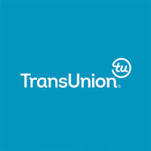|
- Micro borrower segment grew the highest with 15% CAGR, followed by SMEs at 10% CAGR over eight quarters ending March 2016
- Mid-size and SME borrower segments witnessed a surge in NPAs by 4.4% and 3.8% respectively over eight quarters ending March 2016
 Mumbai, November 24, 2016: TransUnion CIBIL, today released findings on Commercial Credit Trends. The report highlights the lending and borrowing trends in India between June 2014 and March 2016.
Mumbai, November 24, 2016: TransUnion CIBIL, today released findings on Commercial Credit Trends. The report highlights the lending and borrowing trends in India between June 2014 and March 2016.
The findings indicate a slowdown in the overall commercial sector loan growth in the specified period. The lowest growth rate has been observed in the MID1 segment which grew at 7% CAGR in the period between June 2014 and March 2016. However the loan growth has been significant in the Micro1 segment (Exposure less than INR 1 crore) which grew at impressive annual growth of 17% and SME1 segment at 12% from March ’15 to March ‘16. Together, these two segments account for approximately one-third of commercial credit. A key catalyst for this was the focus of the banking industry on MUDRA2. Loans that were initiated last year.
Satish Pillai, Managing Director and CEO, TransUnion CIBIL said: “The findings of our research indicate that the business environment is at a cusp of caution in certain sectors and promise in others. There is a tremendous responsibility for lenders to effectively assess the asset quality before disbursing loans.” He further added, “Also currently some banks tend to have analytical and strategic focus on 5 or at most 10 states and may not be fully sensitive on industry credit profile divergences. For e.g., while Rajasthan has lowest commercial credit NPA rate it also has lowest commercial credit exposure growth. Banks also tend to avoid be-spoke high risk/ high NPA industries across exposure class and across regions. In both these approaches a bank is unable to optimize its lending strategy and under lends in industry-geographical clusters which show much lower default rate than the rest of the industry nationally or rest of the geography. Likewise focusing on few states deprive lenders of the opportunity to exhibit calibrated loan growth.”
The credit industry has been focusing on the Micro1 and SME1 segments to overcome the challenges of commercial loan growth blues. Nevertheless, the NPA rate trends in these two segments will also have to be monitored closely. Micro segment NPA rates are currently range bound between 6.0% and 6.5% and for SME segment, the NPA rates are augmenting from 8% to around 11%. The report highlights that banks and credit institutions focusing on these segments of commercial borrowers can take better decisions with respect to targeted loan growth by focusing on the industry-geographical cluster credit profile.
State-wise, Rajasthan emerged as the state with lowest delinquency rate at just 2% for period from March 2015 to March 2016. The commercial loan growth was highest for Kerala, Karnataka and Uttaranchal. The states such as West Bengal and Jharkhand had a commercial loan growth of 1% and 4% but their NPAs stood the highest at 13% and 12% respectively. While Gujarat, Haryana and Madhya Pradesh have sub 5% NPA rate in this segment, only Gujarat is among the top 5 states in terms of exposure to this segment.
Industry-wise, real estate and construction businesses have observed significant loan growth at 11% and 14%, respectively, for the period from March 2015 to March 2016 with NPA rates over 6%. The highest NPA rates of over 15% are in leather, textile and steel industries, making them the most risky credit borrowing industries.
SME loans have started showing signs of stress. The proportionate share of exposure for Public Sector Banks has reduced for SME and Micro Loans and increased for Private Banks. The NPA rates of public sector banks have been on the rise for Micro1 and SME1 loans, but in this segment the NPA rate of private banks are also trending upwards, however the surge is not as drastic as the public sector banks.
- Segments are defined as:
Micro: Exposure < Rs. 1 crore
SME: Exposure 1 crores to Rs. 25 crores
Mid: Exposure Rs. 25 crores to Rs. 100 crores
Large: Exposure >Rs. 100 crores
- MUDRA- Micro Units Development and Refinance Agency Bank (or MUDRA Bank) is a public sector financial institution in India. It provides loans at low rates to micro-finance institutions and non-banking financial institutions which then provide credit to MSMEs.
